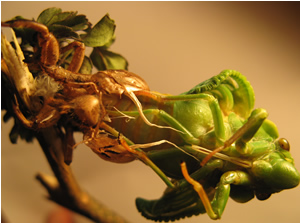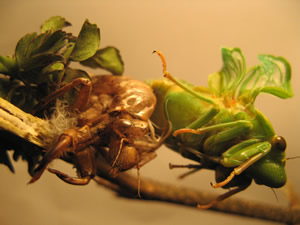Cicadas
There are over 200 species of cicadas that live in Australia. Cicadas have large, robust bodies with strong wings. They have large compound eyes on each side of the head as well as three small shiny simple eyes (ocelli) on the top of the head.
The cicada feeds on the sap of trees. The mouth parts of the cicada are enclosed in a long, thin, beak-like sheath. It uses its mouth parts to penetrate the surface of trees and suck out the sap.
Cicadas are harmless and a very important food source to a number of other creatures. Cicadas are eaten in large quantities by birds and by wasps as a food source for their young.
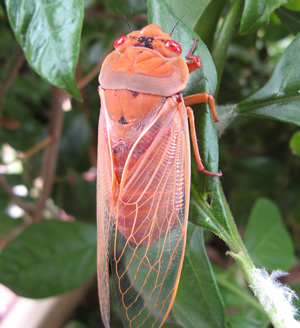
Many species of cicada sing during the heat of the day with a loud ear piercing noise. This extremely loud noise, can be up to 120dB, actually repels birds. Such loud noise is painful for birds and interferes with their natural communication. Some species of cicada group together when singing to lessen the risk of being eaten by birds. You may hear some cicadas singing at dusk. These species are usually weak and fly very poorly so they increase their activity as night falls.
Why is it a survival advantage for some species of cicada to group together when singing?
Why do you think that some species of slow, weak cicadas confine their activity to dusk?
Australian cicadas live underground as nymphs for between 6 and 7 years. Compared to the nymph stage the adult stage is very short lasting only 2 weeks.
Adults lay eggs on the bark of trees. The eggs hatch into small wingless cicadas which are known as nymphs and fall to the ground where they burrow below the surface. Here they live on the sap from plant roots for a period which may last several years. They shed their skin at intervals as they grow.
When the nymph reaches full size it digs its way to the surface with its front legs, which are specially adapted for digging. It generally surfaces about nightfall in late spring or early summer. The nymph then climbs on to a tree trunk or other object and sheds its skin for the last time. The fully-winged adult cicada which emerges leaves its old empty skin behind.
Below are a set of pictures showing the shedding of the skin after the nymph has dug itself out.
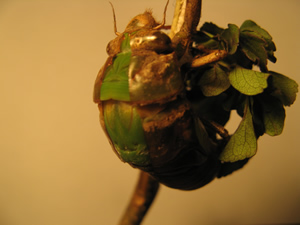
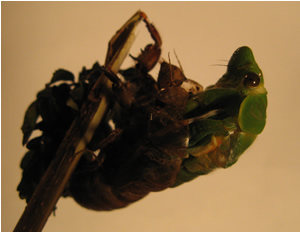
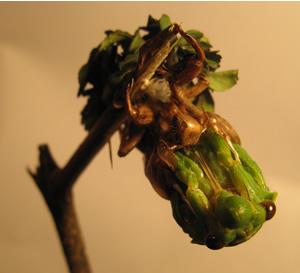
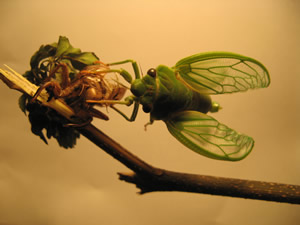
Consider the discarded shell of the nymph. You will find many of these in your neighborhood during summer.
Is the nymph well suited to
digging or flying? Explain.
Have a look at the mouth parts of the nymph, as visible from the shell.
Suggest how the nymph eats when it is below ground. Explain why.
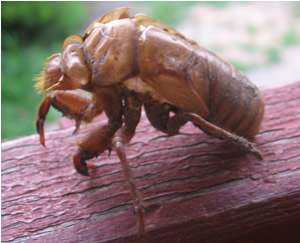 s
s